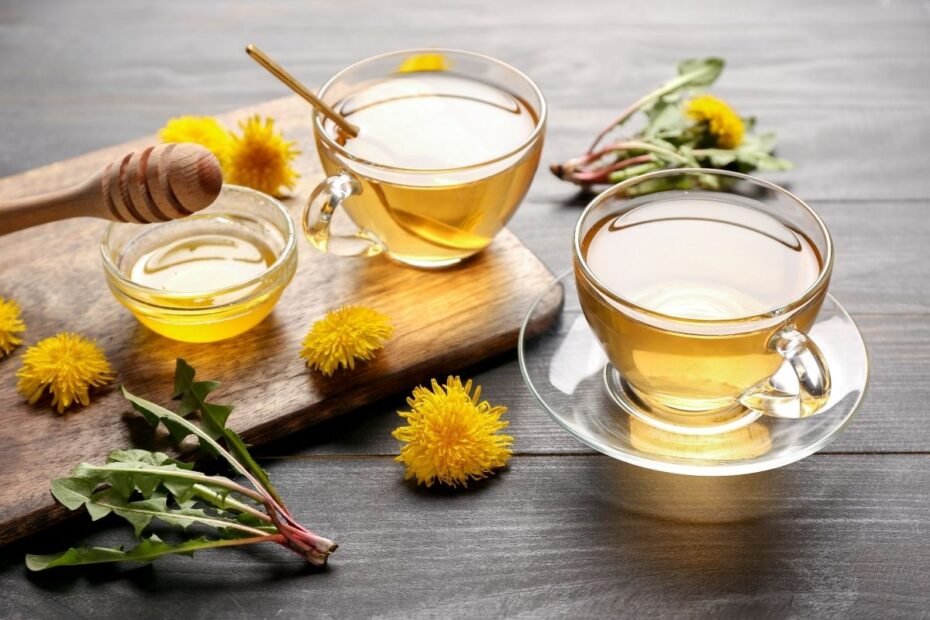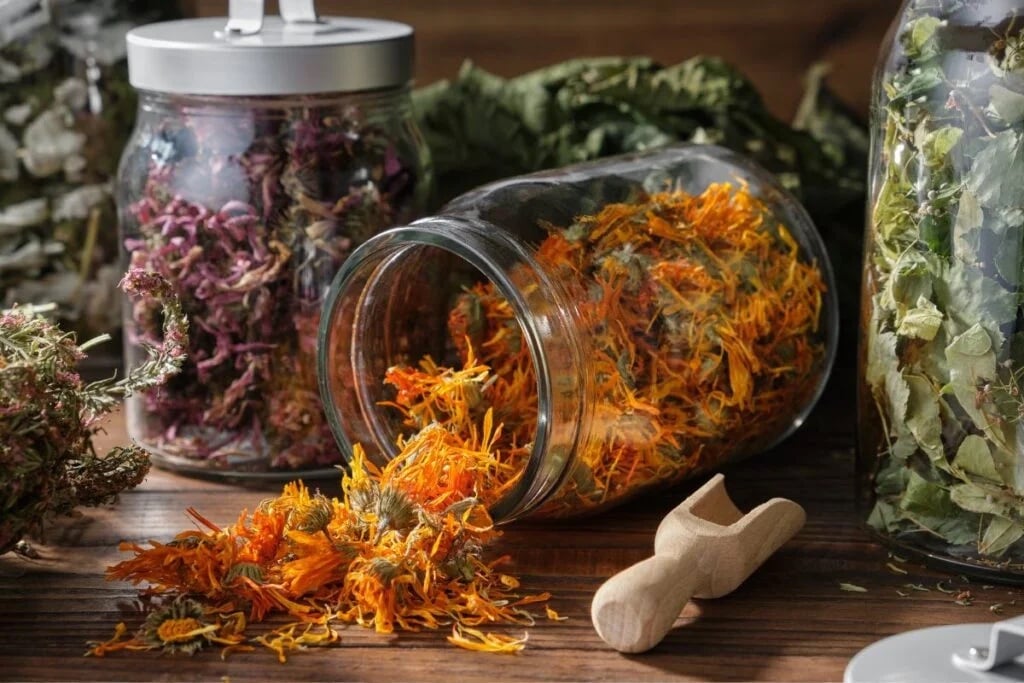Everybody knows dandelion as a wildflower that paints meadows yellow in spring. Dandelion is also considered a garden weed when the wind blows its fluff away, making it grow everywhere. By the way, dandelion tea is a remarkable health drink that you can make using these weeds. You can also feel the magnificent dandelion tea benefits.
Dandelion (Taraxacum) belongs to the genus Asteraceae. There are about 2000 species of dandelion. The plant is widespread in Europe, Asia, Australia, and South Africa. The most frequent of them is the common dandelion (Taraxacum officinale). It grows in meadows, fields, roadsides, and also as a weed in gardens. All parts of the plant have a bitter, milky juice. It is usually a perennial or biennial plant. The root is trunk-like, yellowish, or yellow-brownish. It has a pinnately lobe, sometimes almost equilateral, green, and fleshy leaves. Flowers are solitary, rounded, and yellow or orange. It blooms in the spring and early summer.
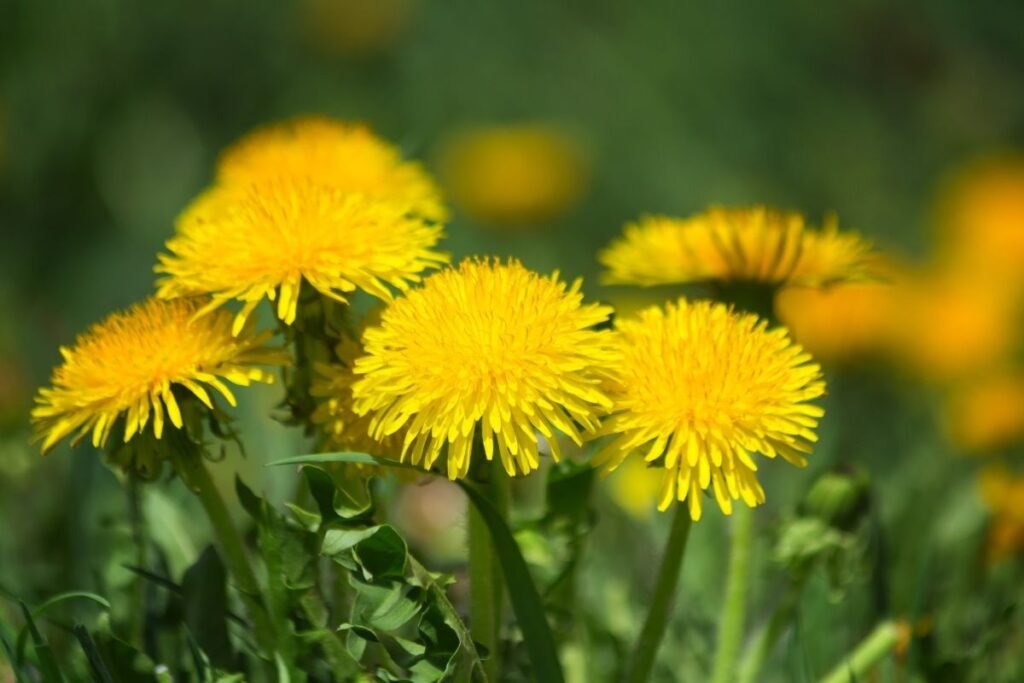
Dandelion Tea Benefits
Dandelions are weeds in some countries, even though they have many positive features. Folk medicine used these plants for quite a long time. Dandelion flowers, leaves, and roots are used for making dandelion tea. You can make coffee from the roots. Dandelion tea is used for a wide range of health problems.
- It can eliminate excess fluid from the body. If you feel bloated, drink dandelion tea because it acts as a diuretic and increases urine output. One study showed that 2 servings (200 ml) of dandelion leaf tea increased urine output.
- Dandelions may help fight inflammation. Polyphenols in dandelion tea may reduce inflammation. Studies observed that cells treated with dandelion-derived compounds showed a significant reduction in markers of inflammation.
- The drink may protect the body’s cells against damage and oxidative stress. Dandelions are rich in potent antioxidants and have many healing properties. One such antioxidant is beta-carotene. It can protect cells from damage and oxidative stress. Dandelions are also rich in another type of antioxidant called polyphenols. These are mainly found in the flowers, but roots, leaves, and stems also have them.
The Benefits of Dandelion Root Tea
- Dandelion root tea may improve liver function. Naturopaths believe that dandelion root tea can help detoxify the liver and relieve symptoms of liver disease. A 2017 study shows that dandelion polysaccharides are beneficial for liver function.
- Dandelion root tea benefits urinary tract infections. Together with bearberry, dandelion roots, and leaves, they can help prevent urinary tract infections. This combination works because of the bearberry’s antibacterial compounds and the dandelion’s diuretic properties.
- It could be used to treat cancer in the future. Recently, dandelion roots have been investigated for their effect on cancer. The results of ongoing research are promising. A 2011 study in Canada showed that dandelion root extract causes cell death in melanoma cells without affecting healthy cells. Another study showed that the same extract also affects pancreatic cancer cells.
- It helps those with digestive problems. Dandelion root tea can have a positive effect on the digestive system. Dandelion has been used since ancient times to improve appetite, relieve minor digestive ailments, and relieve constipation.

Harvesting and Drying Dandelions
- You should harvest all dandelion parts as far away as possible from motorways and industrial areas. It is also crucial that the land is not contaminated with herbicides and pesticides.
- Dandelions flower between April and May, depending on weather conditions. Take care not to damage the petals when collecting dandelion flowers. Once collected, arrange them in a single layer in the shade and dry them for 1-2 days. Once dried, store the raw material in cloth bags for up to 12 months.
- Dandelion leaves are usually collected before dandelion flowering begins and dried in a well-ventilated area out of direct sunlight. Store dried dandelion leaves in cloth bags for up to 12 months.
- You can dig the roots in three stages: before the first leaves appear, after the dandelion blooms, and in early autumn.
- Once you dug the dandelion roots, wash them under warm water and dry them thoroughly. The best drying temperature is 40–60 °C. The lower the temperature, the better, but the roots will take longer to dry. The sign of dried roots is no juice leaking when they are broken or cut. Once dried, store the roots in containers of natural materials. They can retain their properties for up to 5 years.
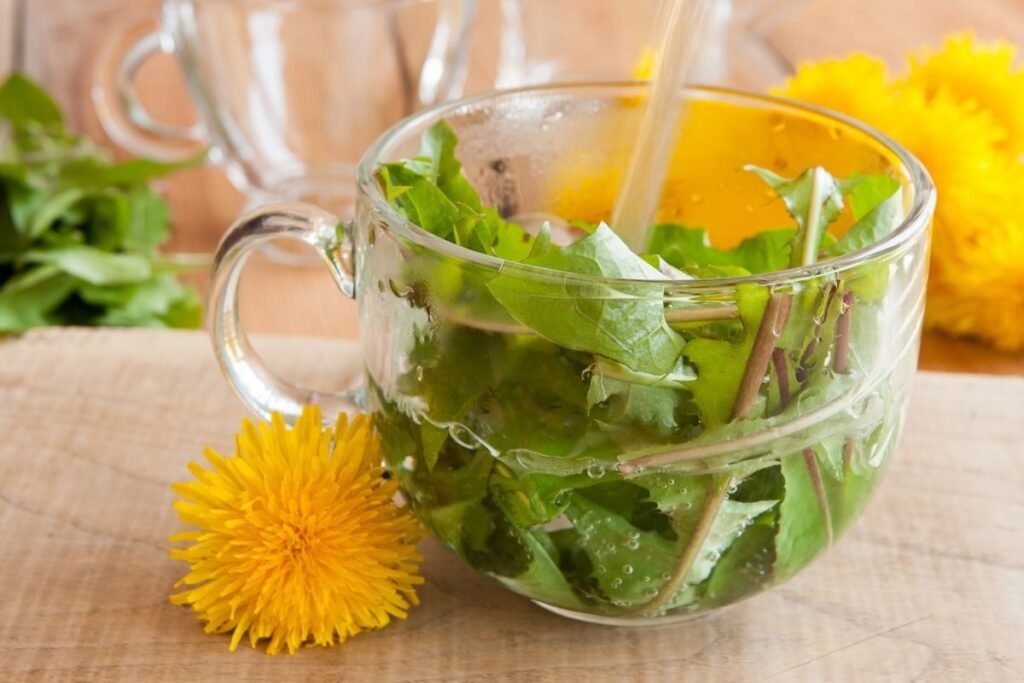
How to Make Dandelion Tea
Dandelion leaves, roots, and flowers are often used in herbal teas. Perhaps one of the most essential facts about dandelion tea is that it is easy to find in nature and prepare for consumption. Just be sure that the plants have not been treated with chemicals before harvesting.
You can drink 1-2 cups per day of dandelion tea.
Dandelion Leaf Tea
You need:
- 6–8 young dandelion leaves (or dried dandelion leaves)
- 200 ml of boiling water
- your favorite sweetener (brown sugar, maple syrup, or honey)
Wash the dandelion leaves first. Then place them in a cup, cover with hot water, and leave to soak for 5–10 minutes. The longer the tea steeps, the stronger it will be. Remove the leaves and sweeten the tea.
Dandelion Flower Tea
You need:
- 5–6 dandelion flowers (or dried ones)
- 200 ml of boiling water
- sweetener of your choice (honey, maple syrup, or brown sugar)
- 1 teaspoon of lemon juice
Pick the dandelion flowers after they have bloomed and rinse them. Place the flowers in a teacup, cover with boiling water, and leave it to steep for 10 minutes. You can strain the tea, sweeten it, and add lemon juice before drinking it.
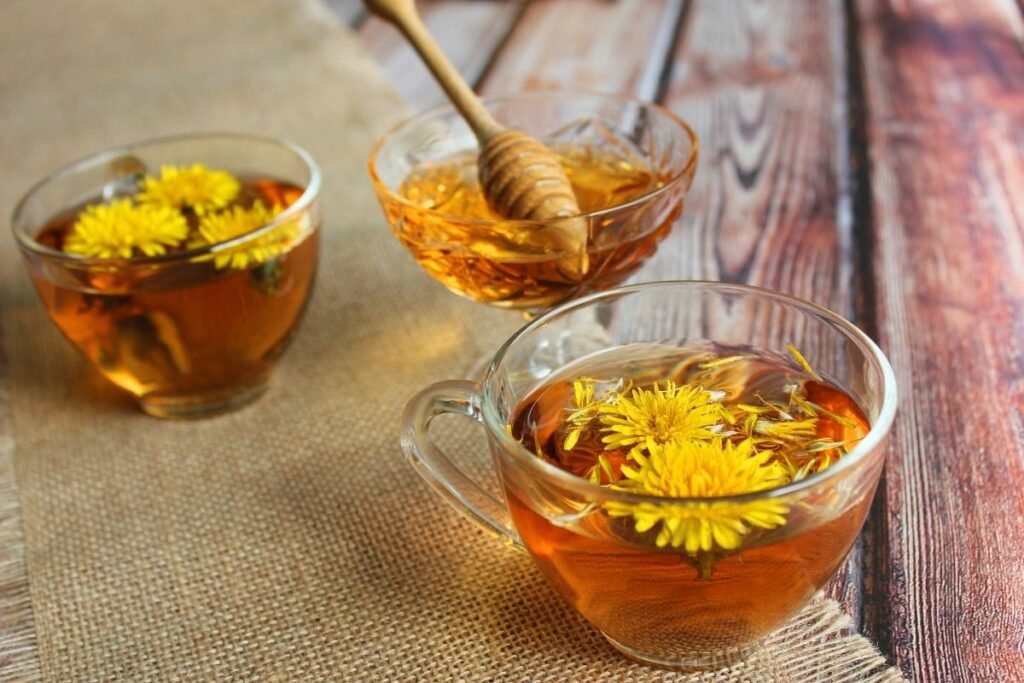
Dandelion Root Tea (or Coffee)
You need:
- 1-2 teaspoons of roasted, chopped dandelion root
- 200 ml of boiling water
Preparation of the tea:
Prepare the dandelion roots in advance for this drink. Wash the roots, clean them very thoroughly, and cut them into small pieces. Preheat the oven to 180–200 °C and, after adding the roots, cook for about 2 hours.
Put the dandelion roots in a saucepan and cover with boiling water. Leave for 10 minutes to soak. You can strain the coffee before drinking it.
Dandelion and Nettle Tea
You need:
- a heat-resistant container
- 1 teaspoon of nettle leaves (both green and dried are suitable)
- 1 teaspoon of dandelion leaves (both green and dried are suitable)
- 2-3 lemon slices
- a slice of ginger
- 200–250 ml of water
Boil the water. Cut the ginger and lemon into small pieces. Add the nettles, dandelion, and ginger to the boiling water. Boil the tea for 5 minutes. If you prefer a robust drink, boil it a little longer. Strain the tea before drinking and pour more boiled water if necessary—season with lemon.
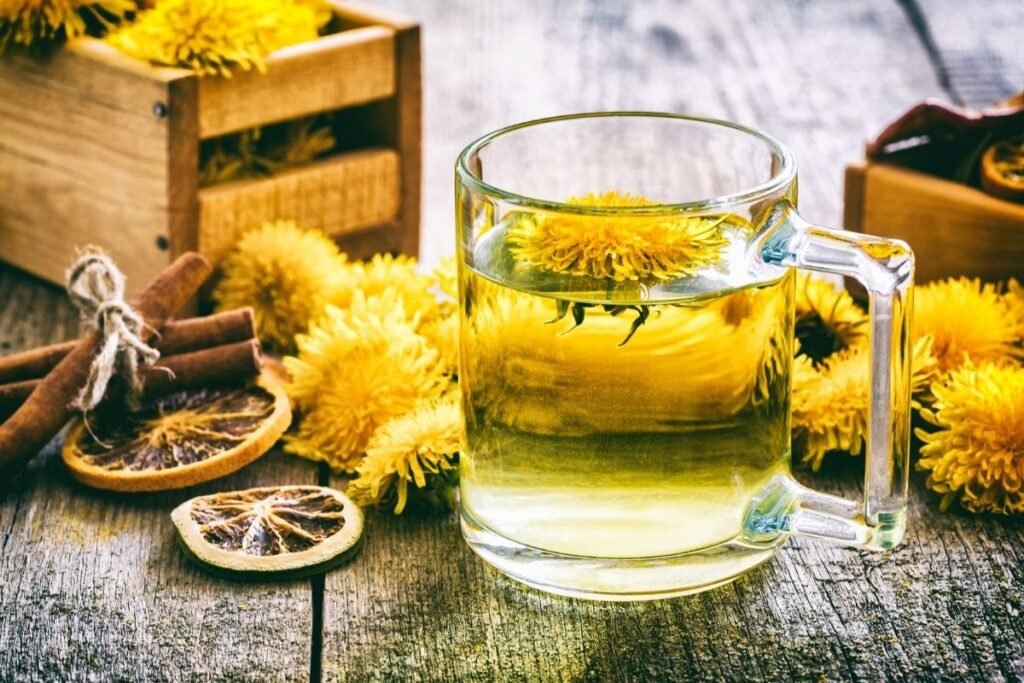
Side Effects of Dandelion Tea
Dandelion tea is relatively safe, but it is essential to take into account several considerations when using it:
- Despite its beneficial properties, a doctor should consult about the use of dandelion tea during pregnancy and when breastfeeding a baby.
- Children under 2 should only drink dandelion tea with a doctor’s permission.
- Some people may have an allergy to touching or ingesting dandelion, which may also cause allergies.
- Dandelions can affect the performance of certain medicines. Therefore, if you are taking medication, consult your doctor before drinking dandelion tea.
Sources:
- https://www.sciencedirect.com/science/article/abs/pii/S0378874122003117
- https://www.mdpi.com/2304-8158/11/18/2858
- https://pubmed.ncbi.nlm.nih.gov/30126855/
Associative photos from © Canva.
